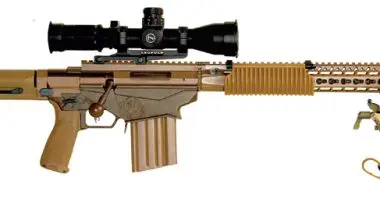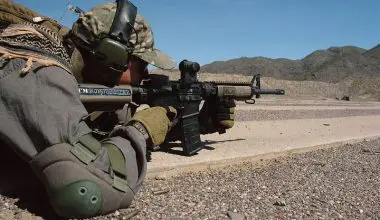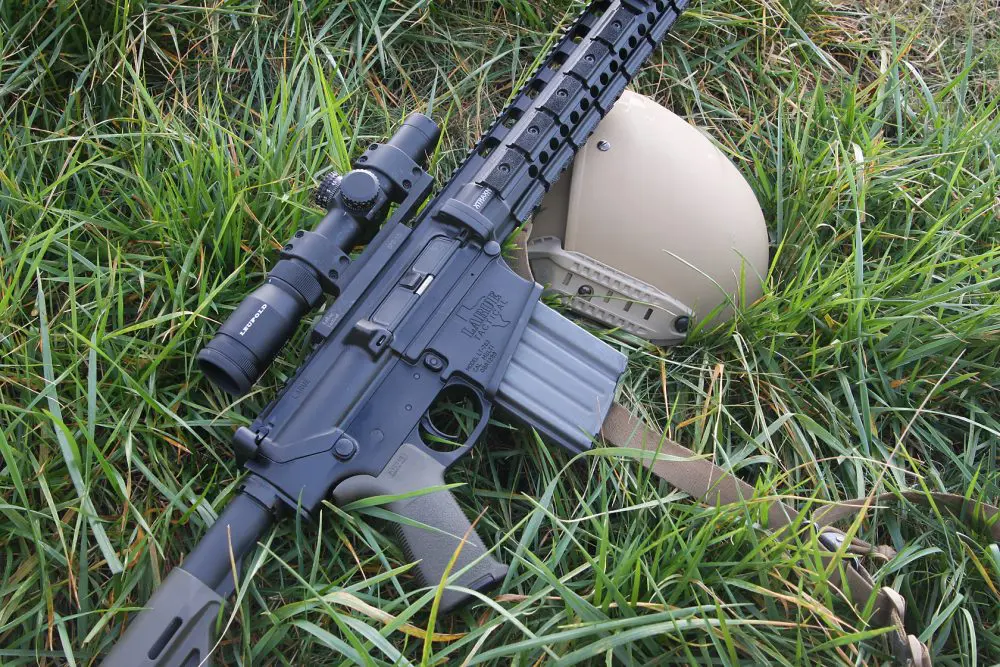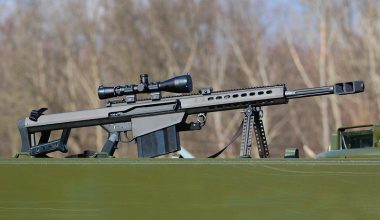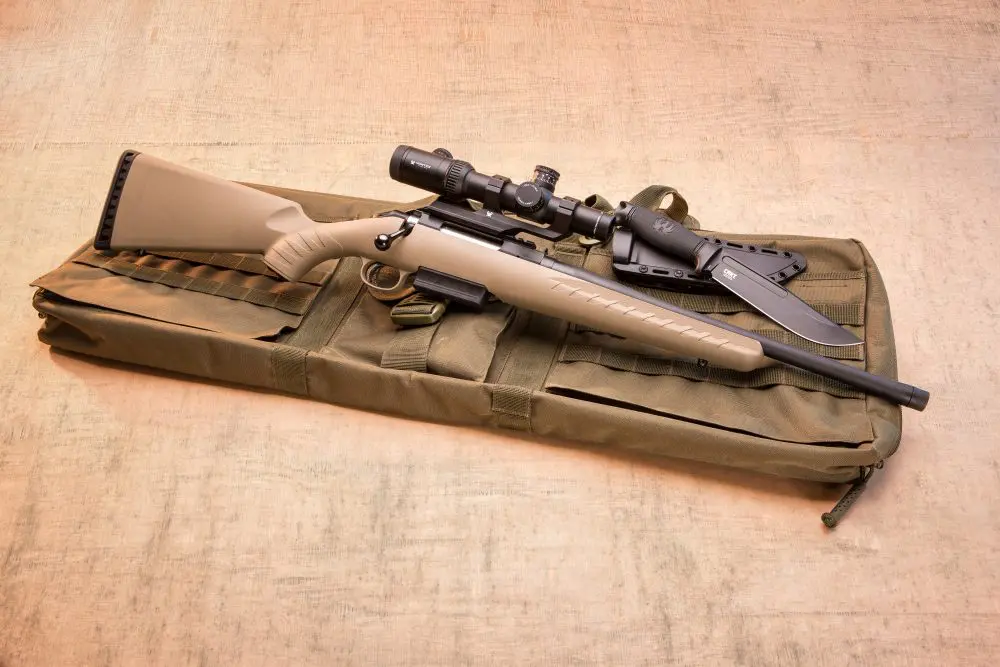Table of Contents
Zel Custom Tactilite T-2
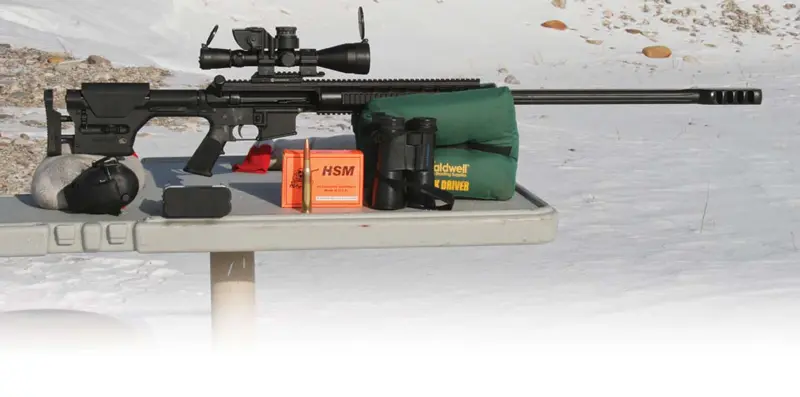
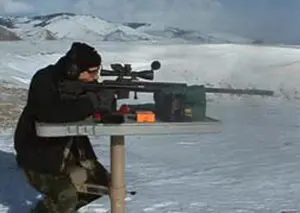
The latest development is the .50 BMG upper on an AR lower. As I researched this phenomenon, I discovered they are made in both single shot and repeater versions. I could see using the lower as a trigger system for the huge upper in a single shot, but how did they make it into a repeater? Intrigued, I had to find out more.
There are a few outfits delving into the concept of a .50 BMG upper receiver on an AR lower, but I found that Zel Custom Manufacturing produces a superior product. I talked with Michael Brendzel, president of Zel Custom, and ordered one for T&E. As you probably suspect, I had tons of questions on how it works, what’s the wear factor on the lower, and how do they shoot? Here is what I learned.
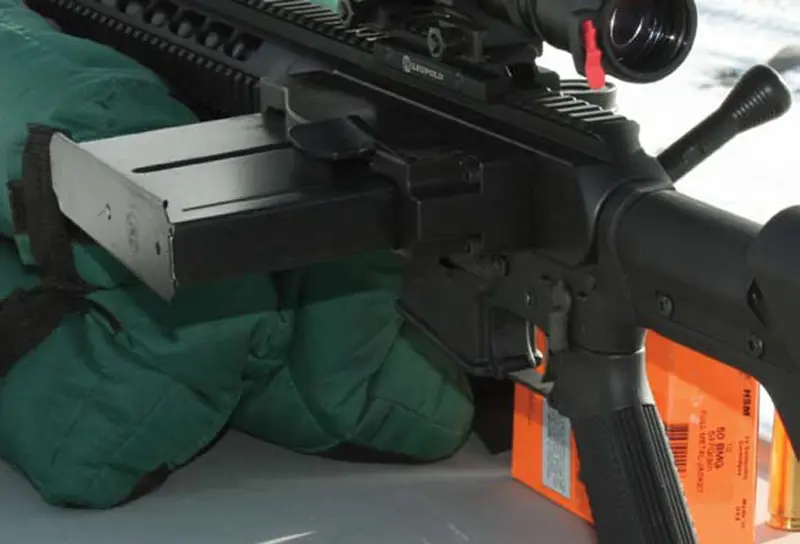
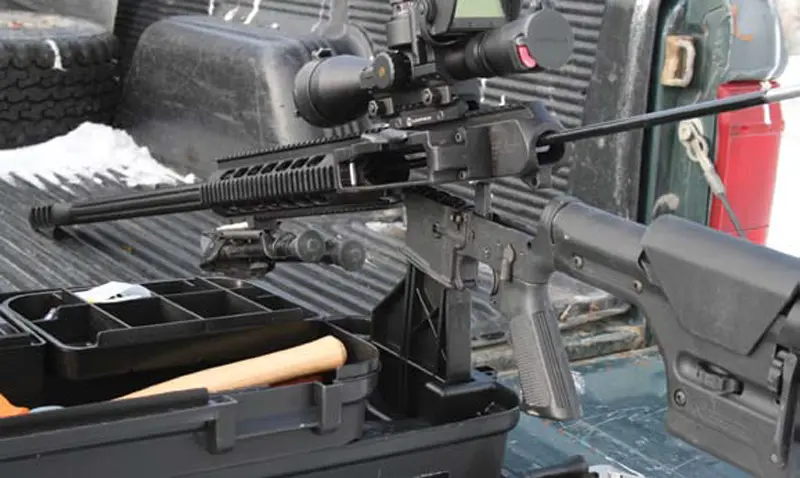
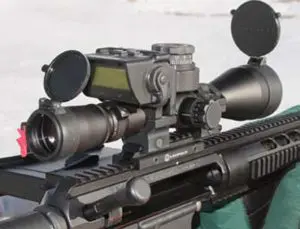
T-2 UPPER
The Zel Custom Tactilite T-2 Upper is a bolt-action repeater with a fiveround magazine that extends out the right side of the receiver. The mag well on the lower is just dead space. Zel also makes these uppers in single-shot versions in .50 BMG, .338 Lapua Magnum, and .416 Barrett. I also understand they are doing a small run in .408 CheyTac. The uppers come in 18.5-inch Ultralite Mossberg Barrel, 24-inch Duty Lothar Walther barrel, and a 29-inch Lothar Walther Super Match barrel. I opted to test the .50 BMG with the 29-inch barrel.
The upper receiver is CNC machined out of a single piece of hardened CRMO steel stock with an integrated scope rail. The mag well and catch are heat-treated 4140 steel, which is exceptionally tough. The barrel is free floated with a matte finish. The hand guard is a four-rail guard for attaching a bipod and any other devices needed for a particular mission. The scope rail is the full length of the receiver and out to the end of the hand guard for night optics if needed. The Super Match is a stainless barrel made in Germany with pulled button rifling with a 1:15 twist rate. The weight of the .50 upper is 16.7 pounds.
I had a stripped lower in the shop and figured it would handle the .50 upper, but wanted a better cheek weld and stock fit than the standard AR plastic stock.
MAGPUL PRS STOCK
All of the .50s I’ve shot in the past ended up with the scope mounted high on the receiver. I immediately thought of Magpul’s PRS AR stock. Zel Custom recommends this stock for their uppers and I am no stranger to the comfortable fit that can be achieved with the positive click adjustment knobs on the PRS. I like it on a precision AR and think it’s a must have to achieve the proper fit on a long-range tool such as this. Zel Custom also offers a Pachmayr Large Field Pad for the Magpul stock.
TRIGGER
The trigger assembly for the Zel Custom upper needs to be changed out from the standard AR trigger. Zel Custom supplies the upper with the parts to change the trigger. A stiffer spring and a hammer that provides more mass are easily installed with the supplied pins. Since I was starting with a stripped lower, I was putting parts in, not taking them out. If starting with a complete lower, the bolt catch assembly will need to come off so the upper will sit flush. The upper will fit your favorite lower, but it will not be a quick field switch.
OPTICS
The rifle needed to have some sighting, and Leupold Mark 4 optics in a 15X variable seemed like a good choice. This Mark 4 was topped with Barrett’s BORS (Barrett Optical Ranging System) ranging and trajectory computer. This scope will assess and compensate for all environmental conditions except wind. The BORS can also be used as a ranging device. I use electronics to range and compensate for drop and wind, so the BORS is a neat package attached to the rifle to do the calculations. The difference is the BORS does it automatically, and the only thing the operator needs to do is dial in the yardage. The corrections are included in the turning of the turret.
BIPOD
Once the scope was mounted and zeroed, the next concern was a bipod or shooting rest. This is a big gun when put together and, although the recoil isn’t excessive, it is substantial to things like a bipod because of the weight. The fourrail front hand guard came in handy for mounting a bipod on the bottom rail. The bipod should be a heavy-duty one, because the weight and recoil will fold up legs that don’t lock in place.
I initially used an attachment from Brownells that will adapt from a Picatinny to a sling swivel mount type bipod attachment and used a regular weight Harris pod. Don’t do this! The recoil caused the legs to fold, so I put it on backwards, which solved that problem, but it’s still too lightweight for the purpose. The gun beat me up a little too, because the bipod let the rifle come back hard, something I didn’t notice when shooting the rifle off a Tack Driver Bag from Caldwell.
Versa-Pod makes a heavyweight pod for the .50 BMG, and that’s the way I would go with the big gun. Zel Custom offers bipods as options with their uppers.
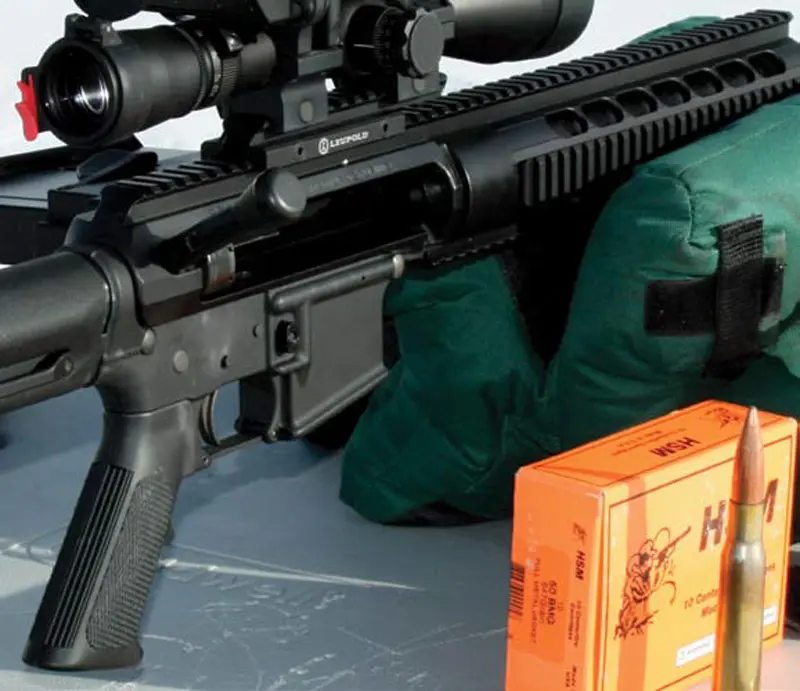
AMMO
I worked with a variety of ammo because I wanted to evaluate the accuracy of the upper. After all, what good is a .50 that won’t consistently hit a sack of coffee at 1,000 yards?
Some of the ammo I ran through the upper I’ve used before and therefore was familiar with the past results, which helped with the evaluation. The first was Barrett’s 661-grain, poking along at 2,700 fps. This ammo was also in the BORS calculator, so I was able to make range adjustments simply by bringing that load up in the screen and turning the turret to the desired yardage. Other ammo was from The Hunting Shack and Extreme Shock ammo.
I also experimented with reloading some of Barnes Solid match bullets and full metal jacket designs. Reloading with the .50 offers the same advantages as reloading any other round, but everything is bigger. Those big cases eat up a pound of powder pretty quickly! My loads performed pretty well, though I haven’t spent much time reloading .50s. As with reloading other calibers, working up a good load takes a bit of time. Reloading loads also allows me to load them a little softer (if there is such a thing in the .50) for practice.
The first session with the upper I fired 20 rounds; ten of the Barrett and ten of my own concoction. My reloads were Barnes 750-grain solids on top of 245 grains of HG 846. These were also break-in rounds as the barrel was new.
RANGE TESTING
The first job was to zero the BORS at 100 yards. Once I was dead center on the dot at 100 yards, the barrel shot one group at 1/2 minute. The rest of them were around 1 to 1 1/4 minute. I was satisfied with those groups because I was just getting familiar with the rifle and the weather was less than perfect.
With the snow that day, the farthest gong visible was at 400 yards. It was only a matter of adjusting the BORS to 400 yards and the rounds were impacting dead center on the gong. I realize gong shooting isn’t precise, but for that miserable winter day and during a break-in session, I was happy with the results. This was good practice because I don’t remember many missions or competitions when the weather was perfect anyway. Out of sheer luck, my reloads were hitting very near the same point of impact as the Barrett ammo.
Later, I shot the Zel with 647-grain full metal jacket loads from The Hunting Shack. Temperature was around 38F, wind was nil, and I was at 6,074 feet elevation. The Hunting Shack 647- grain load shot a one-minute group right off the bat. Still, with all the snow, the farthest shot I could make with the Zel was 600 yards. I set up, set the BORS at 600 and let a group go. The shots all landed in the center ring, but the group was not as tight as I think the rifle can do. I will take the blame for that.
CLEANING
Another consideration with the .50, especially the longer barreled ones, is cleaning. The barrel on this one is 29 inches, and the chamber is another eight or nine inches. Add in the fiveinch muzzle brake and you need a long rod if you want to clean from the breech end—the recommended method to brush out any precision rifle.
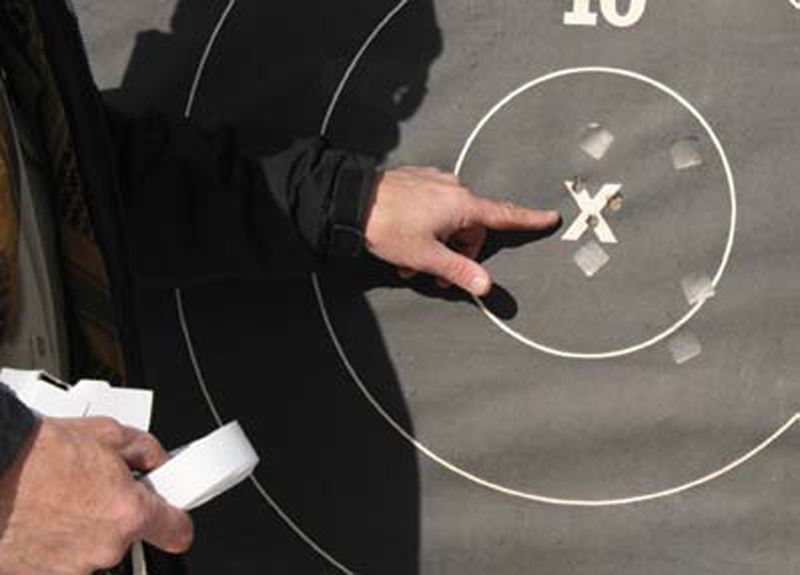
I found that I could extend one of my sectioned rods to make it long enough, but with a tight-fitting brush or jag, I had to be careful the long rod wouldn’t bow in the middle and rub against the inside of the bore. When I have these problems, they are usually solved with a visit to the Brownells catalog. They carry a .50 cleaning rod by Dewey that’s plenty long with only one section and fat enough to not bow under the pressure of cleaning.
The bolt is easily taken out of the upper by removing the bolt handle and pulling the bolt face out the side and the bolt body out of the back. The lower receiver is broken down just like any AR, and the bolt is removed like an AR bolt. The mag well on the lower can be put into a stand like on the Tactical Range Box (TRB) made by MTM to hold the rifle steady, making it easier to work the cleaning rod. This rifle weighs in at around 24 pounds, so it’s easier to manage if there is a third hand like the stand on the TRB, to help steady it during cleaning.
CONCLUSIONS
My first thought about mounting this massive upper on an AR lower was that it would pound the heck out of it. But it doesn’t seem to bother the little AR lower and, although mine fit just a touch loose, I had no difficulty. The design of the upper fit against the lower seems to direct the recoil to the strong points of the lower, and I haven’t noticed it getting any looser or seen any wear that would indicate it was going to damage the lower. Time will tell, but it seems to be a good match.
I had a tough time finding anything wrong with the Zel Custom upper. It’s another way of sending .50 BMG slugs downrange using a lower receiver from another gun.
Although I would probably dedicate a lower just for the Zel upper, dualpurpose items hold a certain fascination. The suggested retail price of the Zel Tactilite T-2 is $2,398.00.
